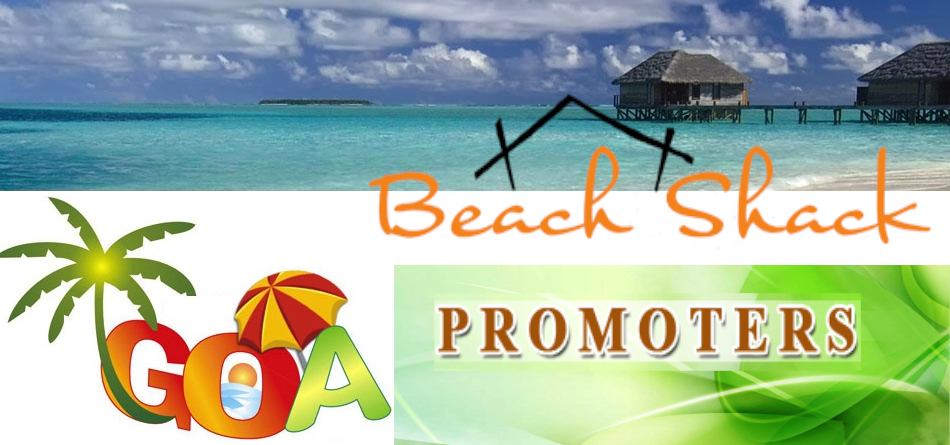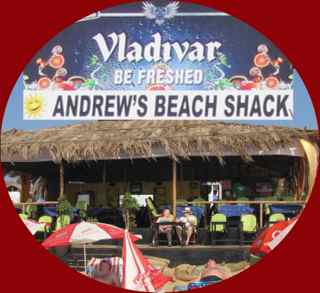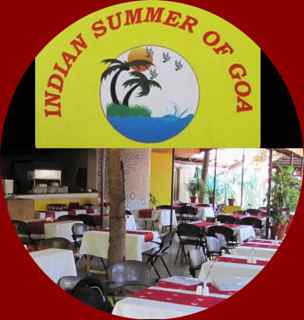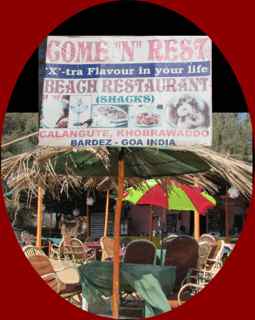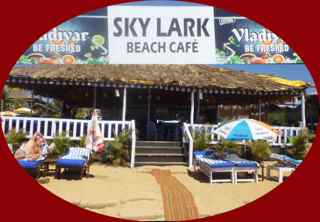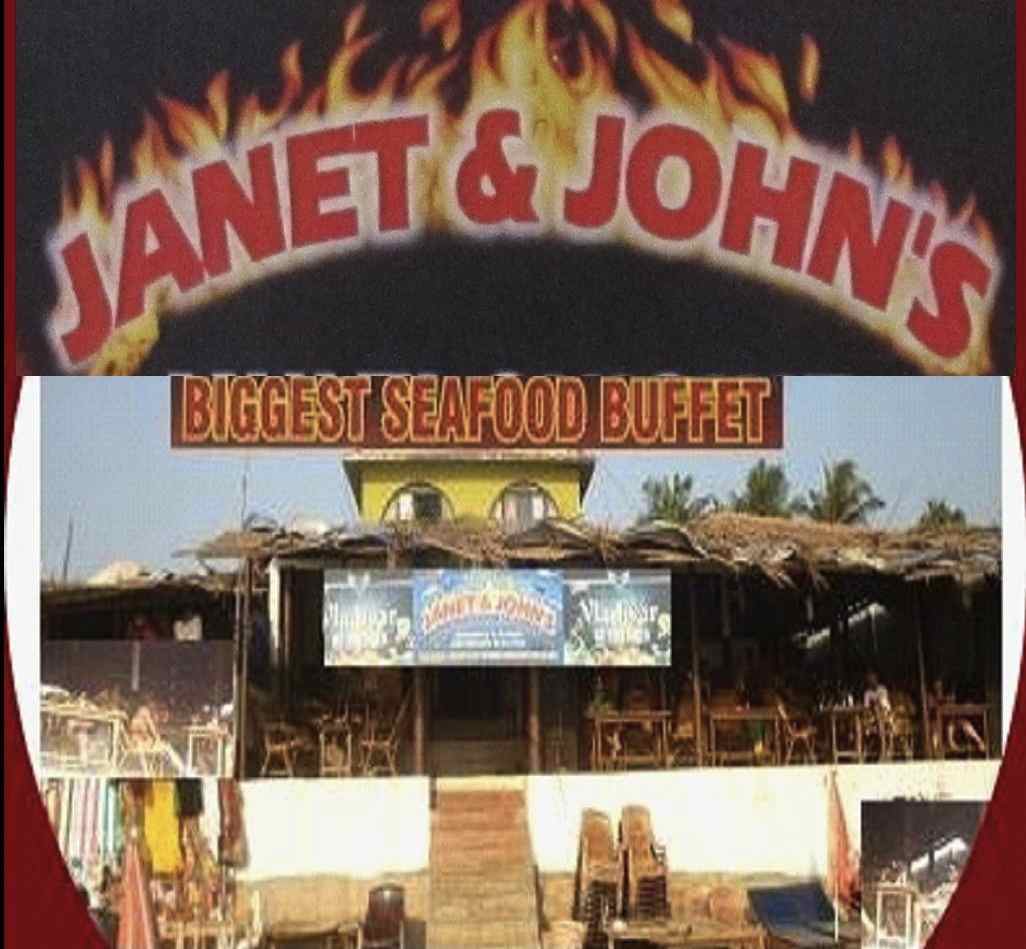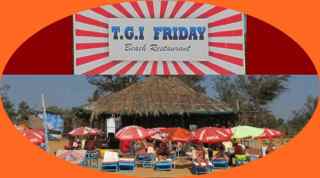Beach Shack Goa Promoters
Our motto “Beach Shack Goa Promoters” is focused to provide the best facilities on the shores of Goa to our clients who have been to the five corners of this world seeking adventure, and take back memories of secret Goan hideouts and beaches, memorable night-parties and all that you have conquered, and everything you've ever set out to do during your holidays in Goa. But what is there at the end of a farmer’s life, that isn't there at the end of that of a king? Live like a king while you can.
You know you deserve
the very best in luxury and
relaxation.
Book a Party at a Beach Shack in Goa
Call Toll Free 0091 80 89 89 7777
CALANGUTE
Calangute is the most popular beach with thousands thronging it in both the peak and off-season. The waves rise high above as
you wash away your city blues, though swimmer need to be a trifle cautious because of the sudden drop and the rising waves.
Experienced swimmers will, however, revel in the seas here.. The beach is fringed with popular restaurants and hotels, including the
Calangute Residency operated by GTDC. This long, seven-km sweep of sand located 15 kms from Panaji, is called the 'Queen of
Beaches'. All the travel agencies and tour operators have a base here from where bookings are done for most of the other
beaches.
Parasailing at calangute beach
Years of tourism has brought in a tremendous change in the scenario. Hotels and guesthouses stretch uninterrupted from
Calangute to Baga. The village of Calangute has all basic facilities like post office, banks, foreign exchange offices, resort
companies, all kind of bars and restaurants, besides medical facilities. The number of internet cafes in Calangute might even
exceed that of the entire city of Panaji.
Huge showrooms filled with exquisite handicrafts from Kashmir, Tibet, Indonesia, Rajasthan and other exotic places, line up the
main road running towards Anjuna.
BAGA
A few kms down the beach is another—Baga.-- part of a 30 km stretch of beach coastline along the west coast of Goa which
begins at Fort Aguada, continues as Sinquerim Beach, moves on to Candolim which merges into Calangute Beach and then
stretches on to Baga, Anjuna and on to Vagator, finally ending at Chapora beach. Truly a veritable feast of beaches.
Compared to Calangute, Baga is quieter and also more isolated. Its scenic beauty, with the creek, the Retreat House perched on
the hill and the fewer tourist buses all have contributed to its unique beauty. It is more popular with western tourists who love to
use it as a base for water sports and fishing in the area.
VAGATOR
This most photographed beach of Goa forms a bay that curves from the headland to the hillock crowned by the Chapora Fort.
This beautiful arc of sand is located about 22 kms from Panaji and is part of the 30 km stretch of beach coastline along the
west coast of Goa.
Adjoining Anjuna, Vagator is secluded, crescent shaped and situated on the Caisua bay along the Chapora river basin in the
shadow of Chapora Fort. During the tourist season, it is a favorite venue for midnight parties. There are a number of buses that
run from Mapusa and Calangute beach to Vagator. The nearest interstate bus station is at Mapusa.
ANJUNA
Anjuna was made famous by the ‘flower power and peace’ generation of the sixties and early seventies. And later by the ‘trance’
parties. Located about 18 kms from Panaji, the beach is known for its breeze-catching palms, soft sand, and the unusual rocky
formation overlying a cove of whitish sand.and black rock that juts into the sea. It is now famous for its weekly Flea Market,
which draws legions of visitors every Wednesday and bargains can be had on apparel, footwear, jewellery, footwear, chess sets
—and yak cheese.
The village of Anjuna is a five square mile enclosure nestling between the Arabian Sea and the Hill overlooking the beach.
SINQUERIM
With its magnificent 17th century fort which has now been converted into a prison, Sinquerim is one of the finest beaches in Goa,
offering international class facilities for water-skiing, parasailing, fishing, scuba-diving and wind-surfing.
Home to the Taj Hotel Group, which dominates the headland around the historic Fort Aguada, Sinquerim is located some 13 kms
from Panaji. The uninterrupted stretch of firm sand stretches all the way north to Baga, offering visitors a temptingly long walk
along the beach.
CANDOLIM
Candolim is the first beach that can be approached from the city of Panaji and is like a gateway to the other more famous
beaches. Though individual accommodation is available here, there are only a few hotels with restaurants attached. One highlight of
Candolim is the parasailing and water skiing facility, besides other water sports.
AGUADA
Aguada beach is almost synonymous with the top-notch Fort Aguada Hotel complex, a superb hotel that is built on the cliff, around
the remnants of the early 17th century Portuguese fort. Although access to the beach is not possible through the hotel grounds,
which are private, you can walk along Aguada beach, for in India private beaches do not exist.
Drawn by the clientele of the hotel, Aguada beach has cafes, itinerant vendors of everything from Kashmiri carpets to massages,
and a good range of water sports.
MORJIM
The VIPs on this beach are the Olive Ridley turtles that come to nest here helped by a group of volunteers who guard the nests
and help the hatchlings get into the sea.
A favourite of Russian tourists, along with Ashwem beach close by, visitors will find signboards and menu cards in Russian!
ARAMBOL or HARMAL
This is also a foreigners’ haunt with a large number of Tai Chi, non-permanent mehendi or henna, tattoo, yoga and meditation
centres. Harmal Beach is the one place you cannot drive on to, but there are narrow lanes that lead to the higher reaches of the
coast. You have to walk down a slope to the beach itself. The black rocks on the silvery beach make for some pretty dramatic
scenery at sunset. Further up near the hill is a pool with soft yellow clay, which is said to have healing properties. Beauticians buy
the clay as do the innumerable massage parlours in the area.
MIRAMAR
This beautiful ‘urban’ beach, akin to Chowpatty in Mumbai, is located just 3 kms from Panaji. It lies adjoining the estuary of the
river Mandovi as it opens into the Arabian Sea. It was originally known as ‘Gasper Dias Beach’, named after Gaspar Dias, a
prosperous landlord and where a Portuguese fort once stood at the fag end of the 16th century.
From the beach across the river is an excellent view of Fort Aguada. With its proximity to Panaji, and located near educational
institutions, Miramar is very much both a family beach and a meeting point for young people. It is also a hot spot for fitness fiends
and walkers. Tourists love the familiar atmosphere. Numerous hotels, including the spacious and well laid out Miramar Residency
run by GTDC, dot the area.
The beach is crowded with locals and tourists alike on most days. A memorial to Goa's first chief minister, the late Dayanand
Bandodkar is located here.
Situated at the happening Baga beach, Andrews Beach Shack has amazing beach parties with international DJs playing here all the time. It is also a skip away from other nightclubs in Baga. A great shack with friendly staff and good food, Andrews Beach Shack is the place to hang out and watch the sunset with a beer in your hand. It serves Italian, Chinese and Continental and is a perfect place to unwind, sky gaze and listen to good music. The tandoori fish here is to die for. A must-try here are their Bloody Marys and their milkshakes. You can also get a nice foot massage here.
Call 0091 808 909 7777 to book your special table with great offers.
One of Goa’s oldest shacks Indian Summer Of Goa specializes in seafood and traditional Goan cuisine. The prawn curry rice is in great demand along with the masala fried fish and crab xacuti (pronounced ‘shakuti’). Recipes have come down through generations of Indian Summer Of Goa. Call 0091 808 909 7777 to book your special table with great offers.
Known more as a beach bar, Come N Rest Beach Shack is known for its trance and loud electro music through the day. A great place to visit during your visit to Calangute Beach, Come N Rest Beach Shackcaters to the young Russian and Israeli crowd along with Indian tourists.
Book a Party at a Beach Shack in Goa
Call Toll Free 0091 80 89 89 7777
On a cool evening, a walk on the beach can be calming and hard on the legs. Walk into Sky Lark Beach Shack to rest awhile and stay for dinner. Get there early to get a table, because it gets crowded really quickly. They have Goan and Continental food, and both are good, though their Continental style is better than their Goan. The vindaloo with sannas is amazingly spicy. The sannas (Goa’s reply to idlis fluffed with palm toddy) were sweet to counter the spice and soft and fluffy like they’re supposed to be. The fenny here is the cheapest. Try the palm fenny with lemonade. Call 0091 808 909 7777 to book your special table with great offers.
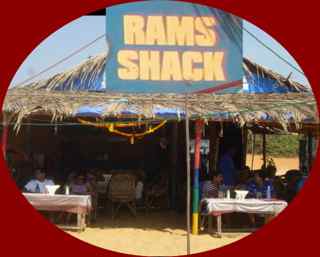
Rams Beach Shack has a long history of catering to global tourists for many, many years. The ‘shack’ has become more like a ‘home away from home’ and is a homecoming for most tourists. The regulars give it an almost local feel throughout the season. Known for its Wednesday night barbeques and Sunday roasts, Rams Beach Shack kitchen offers an amazing range of quality, freshly-prepared food throughout the day. .
Rams Beach Shack, for almost a decade, had the view of the River Princess, a stranded vessel right at the shore and was a
great sight under the moonlight.
Janet and Johns is known for hosting big parties as it has a huge space and a scenic beachside location. In fact, this is more of a lounge and party place, with live music on Fridays when DJs play retro, hip-hop and other genres to pep up the general mood. With the music in full flow, you can dance late into the night. If you aren’t one for a lot of dance, you can have your drink while you nibble on some delicious seafood. The bar is well-stocked and serves perfectly-made cocktails and mocktails. For starters, try their grilled seafood, grilled beef and grilled seafood platter. The beef stew and fish fries here are also classy.
Book a Party at a Beach Shack in Goa
Call Toll Free 0091 80 89 89 7777
TGI Friday is the best shack on Callangute Beach. Both foreign guests and locals love their beef steaks. The Lobster Thermidor is a hot-selling item at this shack. Another delight here is the stuffed avocado and baked crab. There’s pork vindaloo and pork sorpotel which can be addictive. And then there is the wine to give the evening a magical touch at this shack which has a well-stocked bar with the best of liquors and wines. For the
teetotalers, there are mocktails and exotic juices. Tourists come here because of the great food. The queues for tables strangely enough don’t annoy the hungry guests here. Calangute beach is also called the ‘Queen of Beaches’ which was once the land of fishermen. It was later discovered by the hippies in the late 60’s and has now become their haven. Call 0091 808 909 7777 to book your special table with great offers.
Call our Toll Free Number 080 89 89 7777 and book your Table at the shack or Throw A Private Beach Party.
Private Beach Party right on the Beach Call our Toll Free Number 080 89 89 7777
Self Driven Cars in Goa visit www.RentAcarGoa.com

